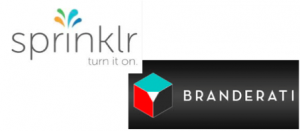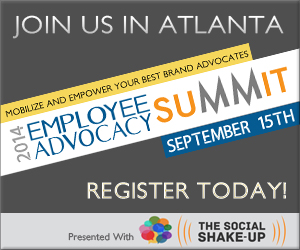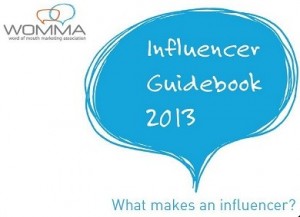Sprinklr, the leading independent end-to-end social relationship infrastructure, announces the acquisition of BRANDERATI, the industry’s foremost platform for employee advocacy and influencer marketing.
I had the opportunity to discuss the details of the acquisition with my long time friend and colleague Ekaterina Walter @Ekaterina, who’s been a pioneer of influencer engagement and advocacy for many years, most recently as CMO of Branderati. She is now joining Sprinklr as Global Evangelism Lead. Below is a synopsis of our discussion covering how the partnership formed, the robust capabilities it brings to brands, what it means for the industry and more …
Susan Emerick: You’re an inspiration to me personally and professionally. It comes as no surprise that you’ve been a part of spearheading this partnership, which provides brands such a powerful suite of capabilities. What would you describe sets it apart from the growing number of software providers in the growing advocacy space?
EKaterina Walter: Sprinklr bought us because Ragy (Thomas) @ragythomas understood that advocacy has moved from hype to real business driver. Sprinklr’s charter is to provide end-to-end social media infrastructure. To fulfill this mission, the company needed to add advocacy marketing as a core, integrated module that acts as a seamless extension of the social stack.
Branderati technology and expertise brings several things to the equation.
First, our screening technology captures API and self-reported data to align potential advocates with predefined profiles of ideal ambassadors. This technology is critical for any brand looking to create highly vetted advocacy networks at scale. By combining this screening process with the ability to identify candidates across moderation, social listening and CRM, we will deliver the most complete advocacy recruitment solution in the marketplace.
Second, from an engagement standpoint we bring the ability to create entire members-only programs that are highly targeted and personalized to each ambassador. By combing this engagement platform with the larger campaign management and scheduling functions in Sprinklr, the platform becomes a unified command center for activation of both advocates and the broader community.
Third, from a measurement standpoint there are very specific types of tracking data we provide in order to track ambassadors’ true impact. By bringing deep views of this insight into the main reporting suite of Sprinklr we provide a single source for nearly your entire paid owned and earned social impact.
Lastly, Sprinklr acquired focused expertise. We have been managing sustained advocacy programs since 2010. The experience and best practices will be a huge benefit to future Sprinklr product development and to their clients.
Susan Emerick: As you know, I’m passionate about employee advocacy, not just equipping employees with training and content but also helping them engage more effectively with customers and influencers based on social intelligence. What does this acquisition bring to brands that are serious about investing in Employee Advocacy?
EKaterina Walter: It gives brands an integrated approach to activating their internal advocates and offers end-to-end social business solution. Every day, Sprinklr clients are identifying active and potential advocates (both internal and external) through community moderation, social listening and the platform’s powerful audience CRM tools. Their biggest challenge is: how do I activate the right advocates at the right time to align with the Brand’s promotional priorities. Branderati delivers the answer.
Furthermore, the integration of the reporting framework between Branderati and Sprinklr will end “apples & oranges” KPI’s between social campaigns and advocacy programs and provide the full picture of social impact, all in one elegant place.
Susan Emerick: Influencer engagement is complicated. How does this acquisition help brand leaders focus on the most relevant influencers to their business?
EKaterina Walter: The key to identification and recruitment of influencers and advocates is to recruit and identify the right ones.
For that you need to first and foremost know your goal. If you are not clear on what you want to achieve with the program, no number of influencers will be able to help you. Then you align your goals with people. Then you need to understand what communities those people belong to, where they are, what conversation they are driving, etc. Context in this case trumps follower numbers. One person who has 500 followers but leads a passionate community in one particular topic can be way more influential than a generic influencer with 500,000 followers. Influence in this case is defined by the ability to drive actions (conversion, purchase intent, purchase), not just generic conversations.
That is what we help brands establish. A combination of factors that helps define that context is critical to the impact of advocacy or influencer program.
Susan Emerick: The proof continues to mount from industry research that shows trusted relationships in social are most often what people base their purchasing decisions on. What do you anticipate this means for the way Brand leaders need to invest differently?
EKaterina Walter: According to your own IBM data CMOs are considering brand advocacy and loyalty their top priority. But unfortunately up to date not a lot of brands truly invested in the advocacy programs, both internal and external. And if they have, they limited themselves with “borrowing” influencers from platforms that “collect” them. This is a one-night-stand approach and it usually doesn’t drive true business results (though it can drive some awareness). Executives need to invest in evergreen and sustainable advocacy programs that not just spark brand love, but allow for that spark to burn bright long-term, thus building relationships with the right people, in the right place, and in the right way. That community of loyal advocates, will not only carry your brand’s torch, but shine it on the rest of the world. You do it right, you will never have to pay for a new customer again.
For more on the acquisition visit www.sprinklr.com




